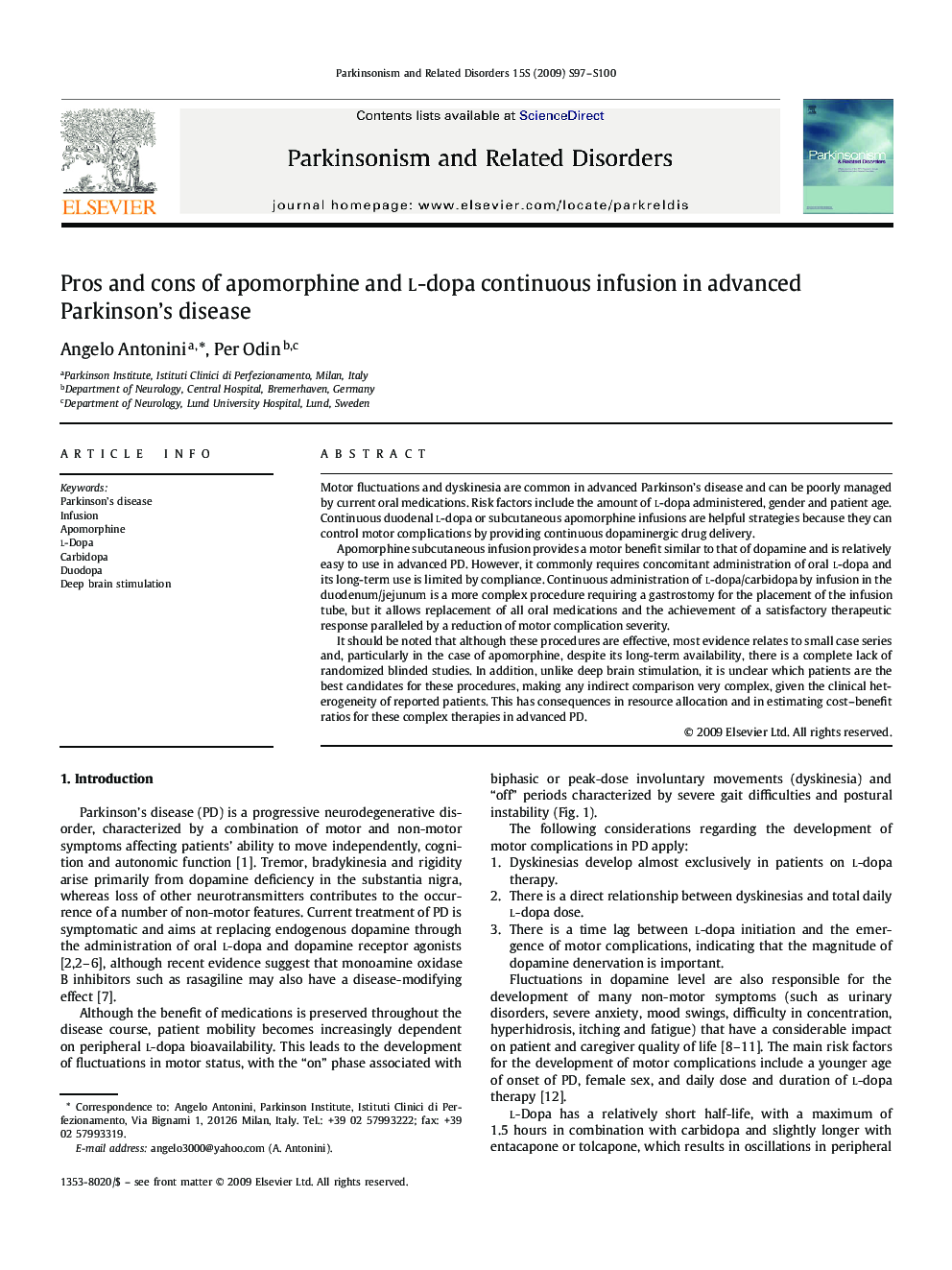| کد مقاله | کد نشریه | سال انتشار | مقاله انگلیسی | نسخه تمام متن |
|---|---|---|---|---|
| 1921322 | 1048765 | 2009 | 4 صفحه PDF | دانلود رایگان |

Motor fluctuations and dyskinesia are common in advanced Parkinson's disease and can be poorly managed by current oral medications. Risk factors include the amount of l-dopa administered, gender and patient age. Continuous duodenal l-dopa or subcutaneous apomorphine infusions are helpful strategies because they can control motor complications by providing continuous dopaminergic drug delivery.Apomorphine subcutaneous infusion provides a motor benefit similar to that of dopamine and is relatively easy to use in advanced PD. However, it commonly requires concomitant administration of oral l-dopa and its long-term use is limited by compliance. Continuous administration of l-dopa/carbidopa by infusion in the duodenum/jejunum is a more complex procedure requiring a gastrostomy for the placement of the infusion tube, but it allows replacement of all oral medications and the achievement of a satisfactory therapeutic response paralleled by a reduction of motor complication severity.It should be noted that although these procedures are effective, most evidence relates to small case series and, particularly in the case of apomorphine, despite its long-term availability, there is a complete lack of randomized blinded studies. In addition, unlike deep brain stimulation, it is unclear which patients are the best candidates for these procedures, making any indirect comparison very complex, given the clinical heterogeneity of reported patients. This has consequences in resource allocation and in estimating cost–benefit ratios for these complex therapies in advanced PD.
Journal: Parkinsonism & Related Disorders - Volume 15, Supplement 4, December 2009, Pages S97–S100